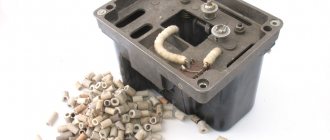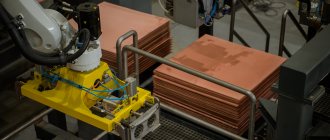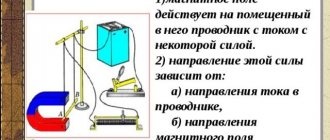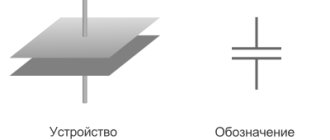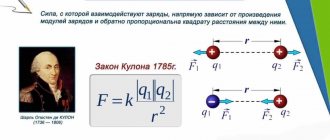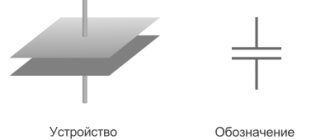Amorphous dielectrics
In amorphous dielectrics with their looser structure, there are significantly more places in which an ion can be located in an equilibrium state. The energy consumption during the transition from one equilibrium state to another will also be different. There will be transitions that require less energy, in which the ion will not, however, be completely freed from the forces that bind it, but, remaining “semi-bound,” will move only a short distance. These transitions will mainly occur as a result of thermal motion. Some significantly smaller number of ions, richer in energy, will be able to completely break away from their binding forces. These ions, by analogy with the case of a crystal lattice, can be conditionally called “free”. This picture of thermal motion corresponds to the solid state.
Transition from solid to liquid state
The transition from solid to liquid occurs differently for crystalline and amorphous substances. In the first case, we observe a sharp temperature T8, and the viscosity of the liquid is already low at temperature Ts. In the case of amorphous dielectrics, t°melt is not observed, and the transition from one state to another occurs, to a first approximation, continuously through a gradual decrease in viscosity. A more detailed study of the phenomenon of transition from a solid to a liquid state shows, however, that there is a certain temperature Tg characteristic of a given substance, at which the viscosity experiences a sharp jump and the substance, remaining very viscous, begins to flow.
Below the temperature Tg the substance should be considered a solid, above - a liquid. At temperatures slightly higher than Tg, an amorphous dielectric retains a number of properties characteristic of the solid state. The dielectric molecules still remain partially elastically bound. The higher the temperature, the weaker these elastic bonds; at temperatures significantly exceeding Tg, we can, to a first approximation, assume that molecules in the liquid move freely. At temperatures close to the beginning of softening, the movement of molecules, although already possible in principle, is very difficult. Externally, this is reflected in the fact that the viscosity of such a liquid is still very high. As the temperature rises, the movement of molecules encounters less obstacles; At the same time, the viscosity also decreases.
As a measure of the extent to which the molecules are “free” in their movements, we can therefore choose the viscosity of the liquid. The thermal movement of molecules in liquids is:
- in oscillation around the equilibrium position, when they are connected in complexes,
- in translational and rotational movements when they are free.
When a crystalline dielectric containing an ionic lattice (for example, salts) is melted, a conductive liquid is usually obtained, which cannot be considered a dielectric. In the case of crystals with atomic and molecular lattices, melting results in dielectric liquids having low viscosity; the movement of molecules in these liquids can be considered free.
Liquids, in addition to neutral molecules, always contain a certain amount of ions, resulting both from the dissociation of liquid molecules and from the dissociation of impurity molecules. In the gaseous state, both translational and rotational motion of molecules is unrestricted.
Dielectric breakdown
For all of the above phenomena in a dielectric, after applying a voltage, after a larger or smaller period of time, a stationary or quasi-stationary (at alternating voltage) state is created, characterized by time-stable values of polarization, electrical conductivity, or, respectively, dielectric losses. However, if you increase the field strength, then there is a certain limit, above which the stationary state is violated. The current flowing through it begins to increase rapidly over time, electrical conductivity increases sharply, the substance ceases to be a dielectric and becomes a conductor, and breakdown occurs.
The time-progressive increase in electrical conductivity that characterizes the breakdown may depend on the type of substance and its state of aggregation, as well as factors such as temperature, type of voltage, duration of voltage, etc., and is caused by various phenomena. These phenomena can be summarized into two main groups:
- thermal phenomena: an increase in electrical conductivity is due to the progressive heating of the dielectric and losses generated in it; breakdown occurs when its stationary thermal state becomes impossible;
- purely electrical phenomena: the increase in electrical conductivity is due to an increase in the number of free charges as a result of either impact ionization, i.e., the disruption of bound charges by moving charges, or the disruption of bound charges directly by the field itself.
Dielectrics are widely used in technology as electrical insulating materials.
Dielectric in a constant electric field
When a dielectric is placed in a constant electric field, the charges from which it is built are subject to the action of forces that determine:
- displacement of bound charges (electrons, ions),
- superimposition on the random thermal motion of some ordered one, consisting in the movement of positive charges in the direction of the field, negative charges in the opposite direction.
This orderly movement can:
- a) lead to a new equilibrium state with a slightly changed charge distribution, upon reaching which the ordered movement stops (rotation of dipole molecules, movement of semi-bound ions);
- b) continue continuously as long as there is an electric field in it (free ions and electrons).
Dielectric polarization
These processes will develop at different speeds. The displacement of bound charges will require only a very short time to complete; processes proceed much more slowly. The displacement of charges in the electric field, as indicated, causes the formation of a reverse field, which weakens the applied external field. This phenomenon is called dielectric polarization. A measure of the weakening of the field inside it is the electrical permittivity (constant). Since the polarization process does not occur instantly, but requires a certain finite period of time to complete, the quantities associated with the phenomenon of polarization, in particular the dielectric constant, are not constants, but variable quantities that depend on time. As the temperature rises, the intensity of thermal motion increases, and the transition to an ordered state becomes more difficult. As a result, in the presence of processes, the polarization of the dielectric and its dielectric constant should also be affected by temperature, and with increasing temperature the dielectric constant should decrease.
What is a liquid dielectric?
Polarization of this type occurs in the field of electric current. Liquid non-conducting substances are used in technology for pouring or impregnating materials. There are 3 classes of liquid dielectrics:
Petroleum oils are slightly viscous and mostly non-polar. They are often used in high-voltage equipment: transformer oil, high-voltage water. Transformer oil is a non-polar dielectric. Cable oil has found application in the impregnation of insulating paper wires with a voltage of up to 40 kV, as well as metal-based coatings with a current of more than 120 kV. Transformer oil has a purer structure than capacitor oil. This type of dielectric is widely used in production, despite the high cost compared to analogue substances and materials.
What is a synthetic dielectric? Currently, it is banned almost everywhere due to its high toxicity, as it is produced on the basis of chlorinated carbon. And the liquid dielectric, which is based on organic silicon, is safe and environmentally friendly. This type does not cause metal rust and has low hygroscopic properties. There is a liquefied dielectric containing an organofluorine compound, which is especially popular due to its non-flammability, thermal properties and oxidative stability.
And the last type is vegetable oils. They are weakly polar dielectrics, these include flax, castor, tung, and hemp. Castor oil is highly hot and is used in paper capacitors. The remaining oils are evaporable. Evaporation in them is not caused by natural evaporation, but by a chemical reaction called polymerization. Actively used in enamels and paints.
Solid dielectrics
Solid electrical insulating materials are the widest class of dielectrics that are used in various fields. They have different chemical properties, and the dielectric constant ranges from 1 to 50,000.
electric arc,
Solid dielectrics are used in various fields of energy. For example, ceramic electrical insulating materials are most often used as line and bushing insulators in substations. Paper, polymers, and fiberglass are used as insulation for electrical devices. For machines and devices, varnishes, cardboard, and compound are most often used.
For use in various operating conditions, insulation is given some special properties by combining different materials: heat resistance, moisture resistance, radiation resistance and frost resistance. Heat-resistant insulators can withstand temperatures up to 700 °C; these include glass and glass-based materials, organosilites and some polymers. The moisture-resistant and tropical-resistant material is fluoroplastic, which is non-hygroscopic and hydrophobic.
Radiation resistant insulation is used in devices containing atomic elements. This includes inorganic films, some types of polymers, fiberglass and mica-based materials. Frost-resistant insulation is considered to be one that does not lose its properties at temperatures down to -90 °C. Special requirements are placed on insulation intended for devices operating in space or vacuum conditions. For these purposes, vacuum-dense materials are used, which include special ceramics.


